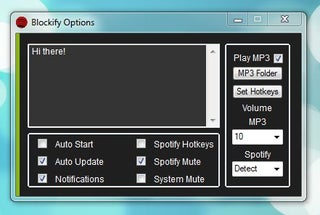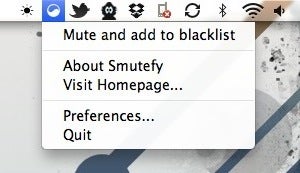One of the great things about Firefox is how customizable it is. In fact, you can even make it look like the old Firefox if you want. Do you miss the Add-ons bar, small icons or tabs on bottom? No problem. We'll show you how to get them back.
Table of Contents
Install the Classic Theme Restorer Add-on
- Open the Classic Theme Restorer Add-on page.
- Click the green button to install it.
- Firefox will download the add-on and ask you to confirm that you want to install it.
- Click to finish the installation. Your tabs will be saved and restored after the restart.
By default, you will get the orange Firefox menu in the upper-left corner and square tabs.
Use the customize screen to drag things around, turn on extra toolbars and use small icons
The Classic Theme Restorer gives you lots of extra options on the customize screen.
- Click the menu button
 and choose . The Add-ons Manager tab will open.
and choose . The Add-ons Manager tab will open. - In the Add-ons Manager tab, select the panel.
- A special tab will open which allows you to drag and drop items in or out of the menu and the toolbar.
- Buttons: Choose "Small" to get the classic small toolbar buttons.
- Show/Hide Toolbars: From here you can re-enable the Add-ons bar or add an extra blank toolbar that you can customize.
- Mode: Here you can choose to show text labels under the toolbar buttons or to have just text button (no icons).
- Customize mode is more powerful. You can even move or remove the menu button or address bar if you wish.
- When you are done, click the green button.
For more about customizing Firefox, see Customize Firefox controls, buttons and toolbars.
Restore tabs on bottom and other options
Open the Classic Theme Restorer settings panel.
- Click the menu button
 and choose . The Add-ons Manager tab will open.
and choose . The Add-ons Manager tab will open. - In the Add-ons Manager tab, select the panel.
- Find the entry for Classic Theme Restorer and click the button next to it.
- In the Classic Theme Restorer options window, you can choose Tabs not on top in the first (Main) tab.
- There are many more options to explore here. There is a list of options on the add-on page.
- When you are done, click to close the window and save your changes.





![sshot-2010-08-31-[19-41-19] sshot-2010-08-31-[19-41-19]](http://cdn.howtogeek.com/wp-content/uploads/2010/08/sshot20100831194119.png)
![sshot-2010-08-31-[20-51-49] sshot-2010-08-31-[20-51-49]](http://cdn.howtogeek.com/wp-content/uploads/2010/08/sshot20100831205149.png)
![sshot-2010-08-31-[20-54-07] sshot-2010-08-31-[20-54-07]](http://cdn.howtogeek.com/wp-content/uploads/2010/08/sshot20100831205407.png)
![sshot-2010-08-31-[20-56-44] sshot-2010-08-31-[20-56-44]](http://cdn.howtogeek.com/wp-content/uploads/2010/08/sshot20100831205644.png)
![sshot-2010-08-31-[21-04-27] sshot-2010-08-31-[21-04-27]](http://cdn.howtogeek.com/wp-content/uploads/2010/08/sshot20100831210427.png)


![sshot-2010-08-31-[23-14-30] sshot-2010-08-31-[23-14-30]](http://cdn.howtogeek.com/wp-content/uploads/2010/08/sshot20100831231430.jpg)


